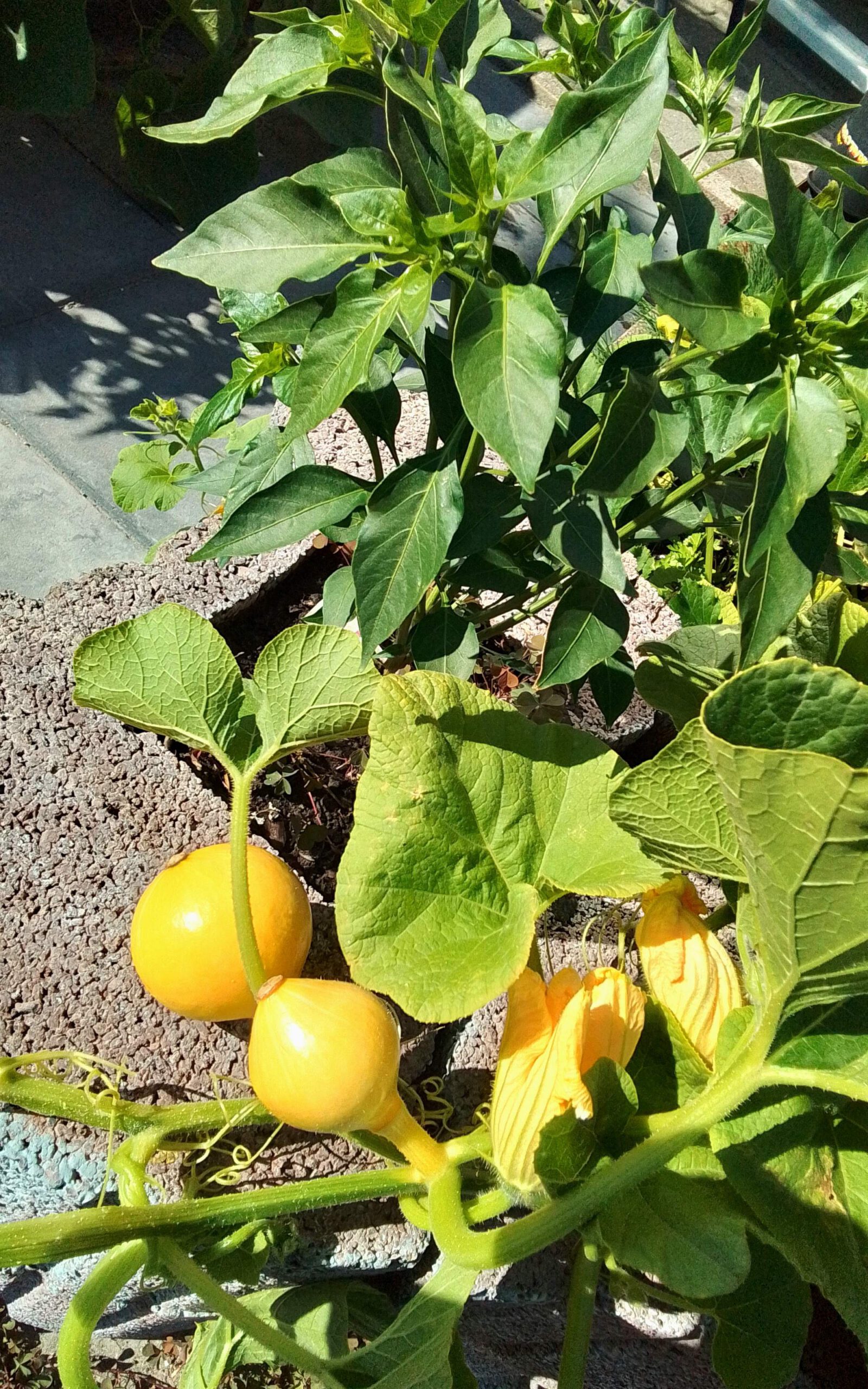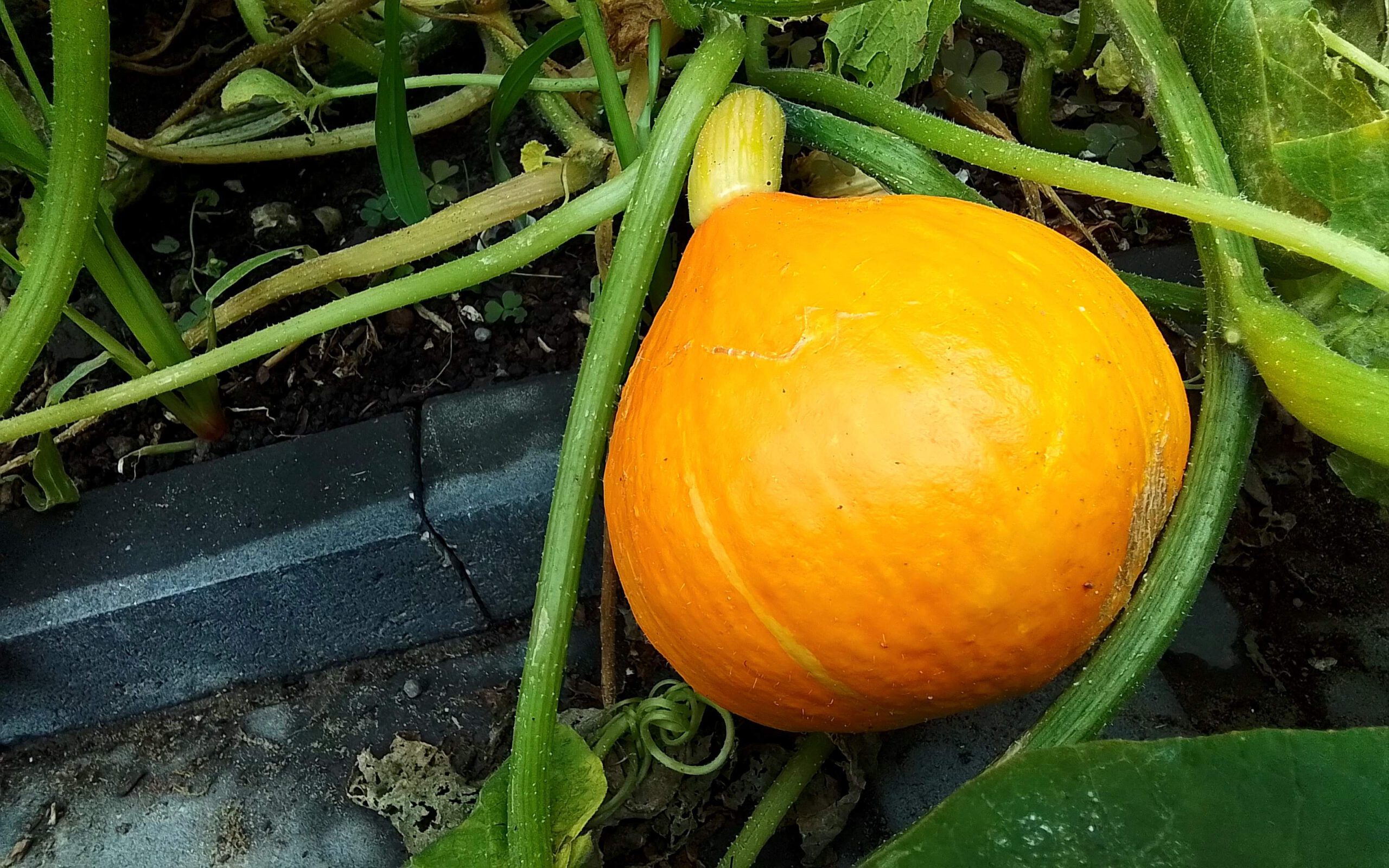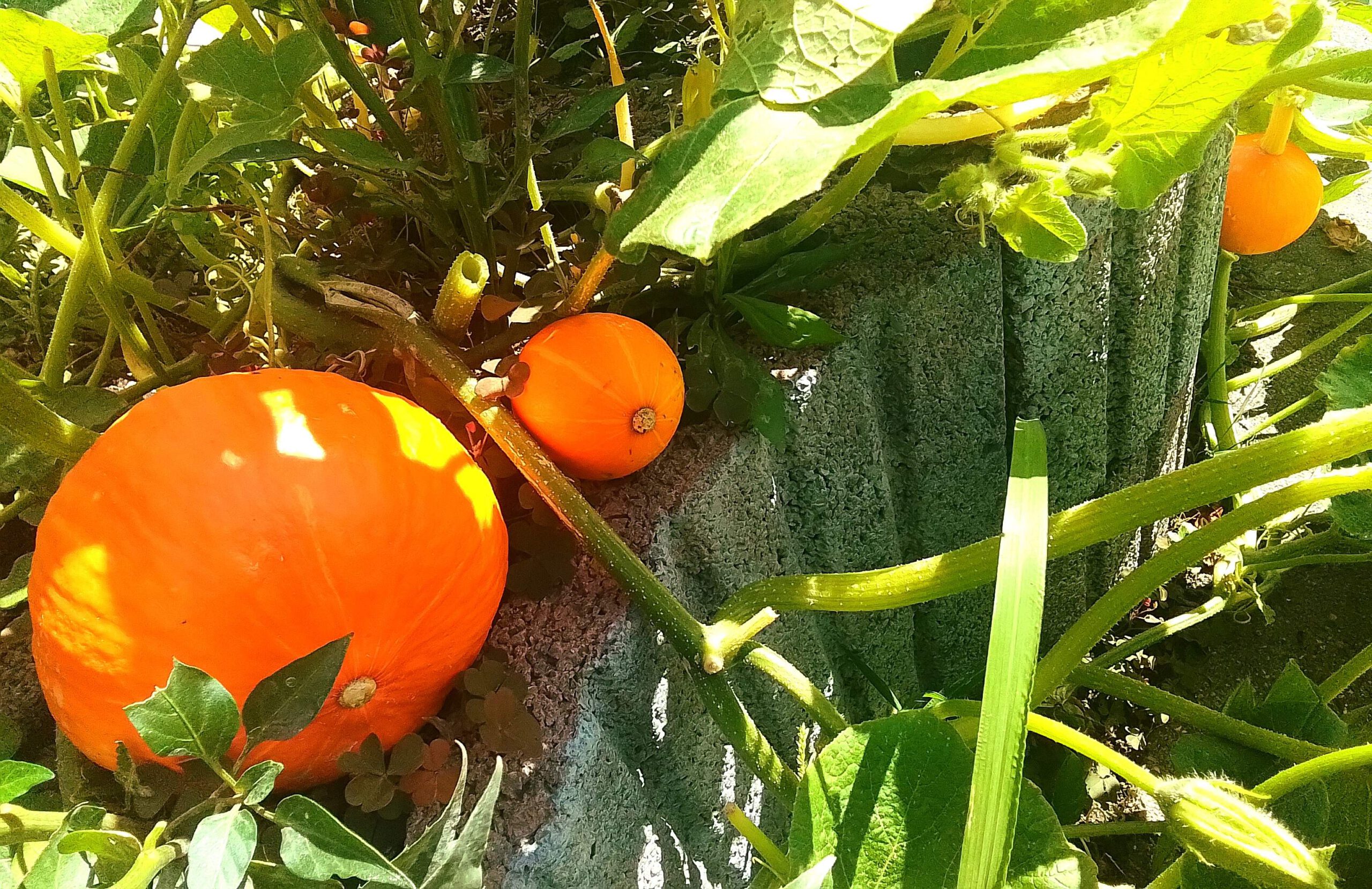wᵣᵢₜₜₑₙ ᵇʸ ᴰᵉᵛⁱˡˢᶜᵒˡᵒʳˢ ᵃᵈᵐⁱⁿ ₂₉₋₁₀₋₂₀₂₅
Japanese Hokkaido Pumpkin
A SWEET NUTRITIONAL POWER BOMB
If you’re searching for a small, flavorful pumpkin variety that’s as beautiful as it is nutritious, look no further than the Japanese Hokkaido Pumpkin, also known as Red Kuri Squash or Uchiki Kuri.
This unique big bright orange nutrient bomb from Japan has become a favorite among home gardeners and chefs for its rich flavor, versatility and nutritional benefits.

🌱 FROM SEED TO HARVEST
1. Seedling Stage:
The journey begins with a small, cream-colored seed.
For best results, start Hokkaido pumpkin seeds indoors about 3–4 weeks before the last spring frost. Use warm soil (around 20–25°C / 68–77°F) and keep the environment consistently moist.

2. GERMINATION
After 7–12 days, you’ll notice tiny shoots emerging. Keep the seedlings warm, bright and evenly watered. Avoid overwatering to prevent damping-off disease.
# DAMPING-OFF
https://en.wikipedia.org/wiki/Damping_off
3. SPROUTLING STAGE
When the first true leaves appear, your pumpkin has officially become a sproutling. This stage is critical for establishing strong roots.
Ensure 6–8 hours of sunlight daily and transplant seedlings outdoors only after the last frost.
Use a grow light to deliver some etra hours of light to prevent leggy stems. The sproutlings will develop their roots most of their time snoozing in the dark.

4. VEGETATIVE GROWTH
Once settled in the garden, vines begin to spread quickly. Large green leaves develop, followed by bright yellow flowers. When the flower opens and starts producing pollen, it is ready for pollination.
Each plant has both male and female flowers. However, these flowers are separate. A single bloom is either male or female, not both.
For a pumpkin to form pollen from a male flower, it must reach the female flower’s stigma. Butterflies, bees and also the wind play an essential role helping the flowers develop into fruit.
4.1. MALE FLOWERS
Usually appear first, often a week or two before the female ones. They grow on long, thin stems.
Inside you’ll find a central structure called the stamen which holds pollen grains (yellow powder).
4.2. FEMALE FLOWERS
Appear slightly later on shorter stems and you can spot a tiny baby pumpkin (the ovary) beneath each bloom.
Inside the flower is the stigma, a sticky structure that receives pollen.
5. FRUITING & RIPENING
Within 90–100 days of sowing, small yellow pumpkins appear and gradually ripen to bigger fruit with a yellowish color slowly turning vibrant orange-red. The rind hardens as the fruit matures and becomes ready for harvest.

🎃 What Makes the Hokkaido Pumpkin Stand Out
The Hokkaido pumpkin is known for its nutty, chestnut-like flavor and sweet, creamy texture. Unlike most pumpkins, its thin skin is fully edible, softening beautifully during cooking, so there’s no need for peeling it!
Typically weighing 1–3 kg (2–6 lbs), it’s the perfect size for small households and culinary experiments. From soups and curries to roasts and baked goods, it’s a true kitchen all-rounder.
This specimen can reach a length up to 4 meters (13 ft.) and produce multiple stems tentacles producing multiple fruits from one plant.

🧡 Hokkaido Pumpkin Nutrition and Health Benefits
The Hokkaido pumpkin is a nutrient-dense superfood, low in calories and high in vitamins, minerals and antioxidants.
Nutritional highlights (per 100g):
VITAMIN A
Supports vision, skin health and immune function.
VITAMIN C
Strengthens immunity and promotes collagen production.
VITAMINS B (especially B6)
Essential for energy and brain function.
POTASSIUM
Regulates blood pressure and supports heart health.
MAGNESIUM & IRON
Vital for muscle and red blood cell function.
DIETARY FIBER
Aids digestion and promotes satiety.
This combination makes it a powerfull orange nutrient bomb for overall wellness and an excellent ingredient for clean, balanced meals.
🌿 What growing circumstances does this heirloom need
These small wonders prefer well-draining, nutrient-rich soil (pH 6.0–6.8).
I found out that the sprout very well in an empty milk carton, just with sowing and cutting soil, styrofoam, bit of cocopeat, compost or some good fertile soil. Mix it up.
Choose a sunny location behind a window or inside a glass house and give them at least 6–8 hours of sunlight daily, covered with plastic transparent kitchen foil.
Transplant them into smal cups, containers or glas jars when they get a second set of true leafs. Raise them indoors behind glass or in a green house outside.
Mix loads of compost or organic matter and rotting fruit and vegetable peelings into the soil before planting outside. Mulch around the plants to retain moisture and reduce weeds.
Water deeply but infrequently, aim for moist, not soggy soil. Avoid wetting the leaves to prevent mildew.
Feed every 2–3 weeks with a high-potassium fertilizer or fruit waste that is pottasium rich when the flowers start to appear.
Harvest once the skin turns a deep orange and the stem starts to dry out. Leave a short stem attached to improve storage life.
Cure in a warm, dry spot for 10–14 days to intensify sweetness and flavor.
# CREAMY PUMPKIN SOUP
Combine roasted Hokkaido with coconut milk or miso.
🌾 Why You Should Grow Hokkaido Pumpkin
Beyond its culinary and health appeal, the Hokkaido pumpkin is easy to grow, visually stunning, and environmentally friendly.
It stores well through winter, adds color to any garden and enriches your diet with nutrients that support immunity and vitality.
Also the hokkaido has a very natural bright orange color which makes it outstandingly suited to make a pumpkin head out off.
Because the Red Kuri squash is smaller then most varieties, they fit great as a head for a smaller puppets body. With a bit of creativity you can easilly attach a small body to your hollow and carved out pumpkin.
Whether you’re a first-time gardener or a seasoned grower, the Hokkaido pumpkin offers a rewarding journey from seed to harvest.










